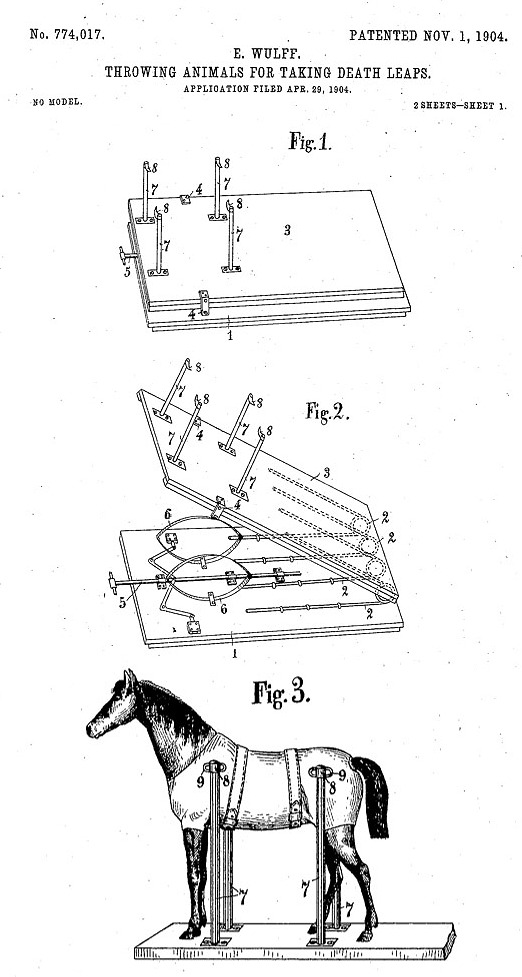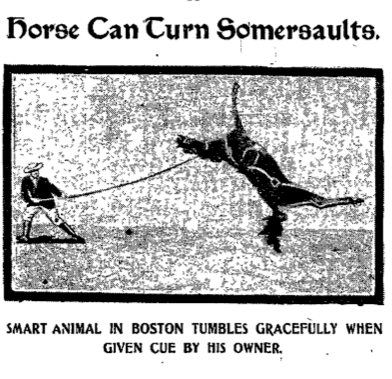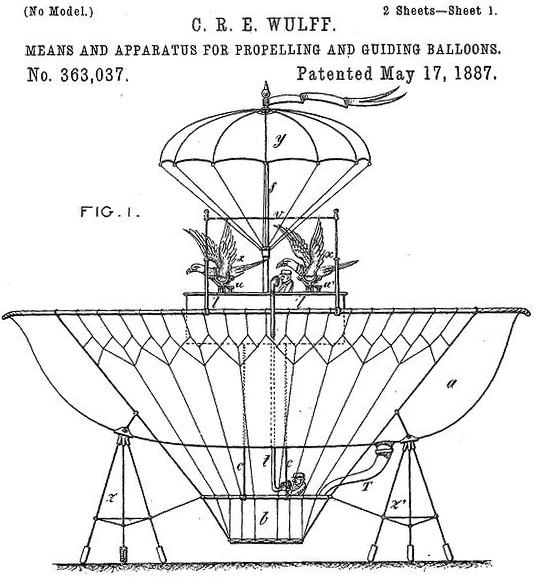ShowBiz
Ziegfeld Coin Test

Life - Dec 13, 1948
Posted By: Alex - Wed Dec 27, 2023 -
Comments (0)
Category: Money, ShowBiz, 1940s
Obscure actor pickets Hollywood
Feb 1938: Self-proclaimed obscure actor Emil Sitka picketed on Hollywood Boulevard, declaring that Hollywood was unfair to him.I don't think that this stunt brought him much recognition, but he did, eventually, gain success in Hollywood when, in 1947, he began appearing in Three Stooges' films. He ended up being known as the "fourth stooge". From wikipedia:
More info: his IMDB page

Pittsburgh Press - Feb 6, 1938
Posted By: Alex - Sun Apr 03, 2022 -
Comments (1)
Category: ShowBiz, 1930s, Actors
Chorus girl slang from the ‘40s and ‘50s
- Blast: a drink. As in, "What'll it be? A small blast or a large blast?"
- Cream cheese: "a fresh, beautiful young girl."
- Endsville: "When a gal gets away from all this madness and marries and has a fine home."
- Give me a bell: call me.
- He's ill: "He's an incurable night-lifer. Home is not where he hangs his hat but where he'd hang himself if he had to go there."
- Idget: "an idiot, junior grade."
- Iron: "a big rich auto." Also known as "a nice piece of tin."
- Revolving Eyeballs: a guy who "drools at the practically undressed pretties."
- Seppo: "a guy separated; he and wife are in 'Splitsville'."

Camden Courier-Post - Mar 14, 1951
Posted By: Alex - Mon Jul 19, 2021 -
Comments (2)
Category: ShowBiz, Slang
Throwing Animals for Taking Death Leaps
Circus proprietor Edward Wulff patented a curious device in 1904. It was an apparatus that catapulted animals upwards. It had the rather alarming title, "Throwing Animals For Taking Death Leaps" (Patent No. 774,017). Wulff claimed it could throw "horses, elephants, monkeys, &c.." The patent illustration shows a horse, so these were evidently the primary animal being thrown.
The device was relatively straight-forward. The animals were placed in a harness that held them on top of a spring-powered platform. The release of the springs then flung the animals upwards. Wulff emphasized that his apparatus was designed, via the harness, to place the projecting force on the full body of the animal, rather than just their legs. He seemed to feel that this was a safer, more humane method of throwing animals.
Wulff explained that this device was designed to be used as part of a circus stunt known as "a death leap or so-called 'salto-mortale.'" But he didn't offer any further explanation about the nature of the stunt or how far the animals were flung. And I couldn't locate any descriptions of this stunt in other sources. All the references to a 'death leap' stunt that I came across involved human trapeze artists, not animals. So I was about to conclude that the stunt would have to remain a mystery until I got the idea to check if Wulff had filed the patent in any other countries. Sure enough, there was a British version of the patent, and while its text was almost identical, it had a different title that explained the nature of the stunt:
So Wullf's apparatus was evidently designed to somersault animals. Not simply to catapult them upwards. This made me recall something I posted here on WU back in 2012. It was a brief item that appeared on the front page of the Washington Post's 'Miscellany Section' on April 21, 1907, titled 'Horse Can Turn Somersaults.' At the time, this random reference to a somersaulting horse totally baffled me. I even suspected it was a hoax. But now it makes sense. It must have been a circus stunt. Perhaps it even made use of Wulff's invention. I can't find any evidence that Wulff's circus was in Boston in April 1907, but it was in New York in December of that year.

Wulff, it turns out, was the author of another odd patent, granted to him in 1887. The patent was titled, "Means and apparatus for propelling and guiding balloons." He intended to use birds such as "eagles, vultures, condors, &c" to guide balloons. The birds would be attached to the balloon by a harness, and an aeronaut would then force them to fly in the desired direction, thereby propelling the balloon.

This patent has received quite a bit of attention, because there's a lot of interest in the history of early attempts at flying machines. Knowing that Wulff was a circus proprietor, I wonder if he intended his eagle-guided balloon to be used as part of a circus act, rather than as a practical flying machine.
Posted By: Alex - Sun Feb 09, 2020 -
Comments (6)
Category: Animals, Inventions, Patents, ShowBiz, 1900s
Big Boot Dance
The performer is. Harry Relph, aka Little Tich. The performance was filmed at the 1900 Paris Exposition.More info: wikipedia
Posted By: Alex - Sun Aug 04, 2019 -
Comments (2)
Category: ShowBiz, Theater and Stage, Vaudeville, Shoes, 1900s
Wild Woman Escapes
1916: The chain holding Yebea, the "wild woman from Borneo," snapped during a performance in St. Louis. Yebea instantly became less wild, apologizing to a woman who was accidentally struck by the chain: "I beg your pardon, dearie; I didn't mean to do it. I hope I didn't hurt you."However, at the sight of the freed wild woman the audience panicked and fled, with people crying out warnings that Yebea had escaped and was running amok. A police officer investigated and found her resting in her boudoir.

Mount Carmel Item - Jan 12, 1916
Posted By: Alex - Mon Sep 12, 2016 -
Comments (2)
Category: ShowBiz, 1910s
The Great Unus
The Great Unus (aka Franz Furtner) had a successful career in the circus, from the 1930s to the 1960s. He was billed as "the man who stands on his forefinger" because his act centered around him doing a series of one-finger handstands.There was a lot of speculation about how he was able to balance himself on one finger. The main theory was that he must have had some kind of rigid, support device in the glove that he always wore during his act, as you can see in the video below. But in the photo, below left, (from the Berliner Illustrirte Zeitung - Mar 27, 1941), he's doing the trick without a glove. So who knows. Although, of course, the photo could have been staged. As far as I know, he never revealed exactly what his trick was.

Posted By: Alex - Tue Sep 17, 2013 -
Comments (4)
Category: ShowBiz
Stanley Steemer variations
You may have heard the Stanley Steemer commercials. But what started out as a voice-over demo evolved into variations on a theme -- the Stanley Steemer song. Mia Gentile worked with a friend, Roger Klug, on the piece.There is a great summary of characters, styles and a high-energy conclusion at about 2:30.
Here's the link to the story:
http://todayentertainment.today.com/_news/2012/12/13/15842111-singer-turns-stanley-steemer-jingle-into-dazzling-romp-through-musical-genres?lite
It certainly shows a wide vocal range and a great imagination!!
Posted By: gdanea - Sun Dec 16, 2012 -
Comments (2)
Category: ShowBiz
Lords of Lightning
Four million volts harnessed for our entertainment.All the fun from Ulster. Who thought Northern Ireland could be so cool!!
Electrifying. (Sorry.)
Posted By: gdanea - Sun Nov 11, 2012 -
Comments (5)
Category: ShowBiz
Quick Change artist Owen McGiveney Jr
Featured on the 1950s panel game show I've Got A Secret. Notice the subtle promotion of the corporate sponsor. More info about McGiveney here.
Posted By: Alex - Sun Jul 22, 2012 -
Comments (2)
Category: Entertainment, ShowBiz

| Who We Are |
|---|
| Alex Boese Alex is the creator and curator of the Museum of Hoaxes. He's also the author of various weird, non-fiction, science-themed books such as Elephants on Acid and Psychedelic Apes. Paul Di Filippo Paul has been paid to put weird ideas into fictional form for over thirty years, in his career as a noted science fiction writer. He has recently begun blogging on many curious topics with three fellow writers at The Inferior 4+1. Contact Us |




